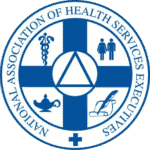When discussing the idea of advocacy in relation to an FQHC, there are two primary avenues toward the definition of the term, “one who supports or promotes the interests of a cause or group.” Nurses serve as advocates for their patients while the FQHC itself can serve as an advocate for the lower-income and rural residents they serve. Let’s look at both avenues to determine how to create a culture of advocacy at your health center.
What is a Culture of Advocacy?
The National Association of Community Health Centers (NACHC) strongly recommends developing a culture of advocacy in your organization. They use the World Health Organization’s (WHOs) definition of advocacy for health as a “combination of individual and social actions designed to gain political commitment, policy support, social acceptance, and systems support for a particular health goal or program.” They suggest that the strength of community health systems and patient health relies heavily on advocacy initiatives.
The NACHC suggests that creating a culture of advocacy requires FQHCs to recognize advocacy as a critical part of the organizational mission. This includes grassroots organizing, along with developing outreach programs to reach the community you serve. Four suggested grassroots advocacy programs include:
- To engage key stakeholders within the FQHC community in championing the implementation of a health center advocacy plan.
- To educate and reduce the stigma around serving low socioeconomic groups.
- To increase awareness of the community health mission with the public and with influential organizations and groups.
- To mobilize all existing resources to support key priorities and initiatives to help your FQHC continue its work in the communities you serve.
But advocacy starts with the clinical teams at the forefront of care in an FQHC. Take nurses, who serve as the backbone for our nation’s care delivery systems. Each nurse in the FQHC, as well as anyone else on the clinical delivery team, can build a culture of advocacy that begins with each patient encounter, simply by following the American Nurses Association Code of Ethics that calls for clinical teams to:
- Respect human dignity.
- Commit primarily to the patient
- Protect the rights of the patient.
- Treat all patients equally.
Creating a culture of advocacy in your organization takes both personal and professional effort. The goal is to create a standard framework for increasing community engagement in the success of your organization. This should include engaging your patient populations in sharing positive stories about community health, lobbying, talking with community leaders in your area, and soliciting positive P.R. for your organization.
The NACHC suggests several advocacy activities that all FQHCs should consider:
- Share stories and data on social media.
- Meet with your elected official both locally and federally to help them understand your valuable place in the healthcare continuum.
- Communicate your mission and successes to patients, staff, and the public.
Effective patient advocacy is just as important as advocating for the benefits of community healthcare providers. Without our advocacy, the health of our patients will suffer. Without our advocacy with the public and elected officials, the health of our organizations will suffer.
At UHC Solutions, we are strong advocates for the FQHC community. Our work each day to provide talent to these organizations plays an essential role in the mission of FQHCs to serve underserved populations. We’re proud of our work and the work of our clients. Talk to our team to find out how we can help your organization achieve its goals.





